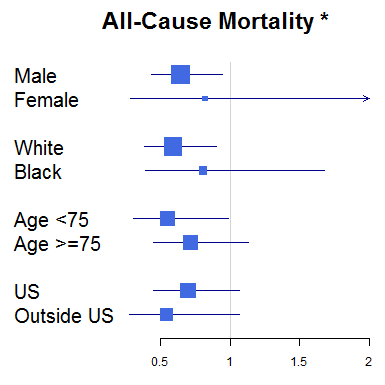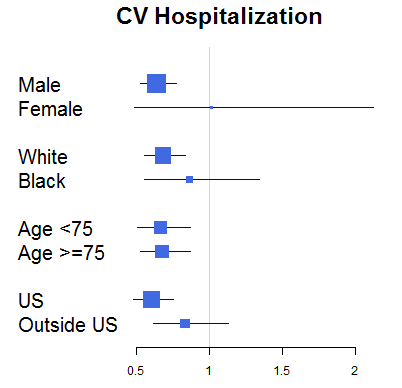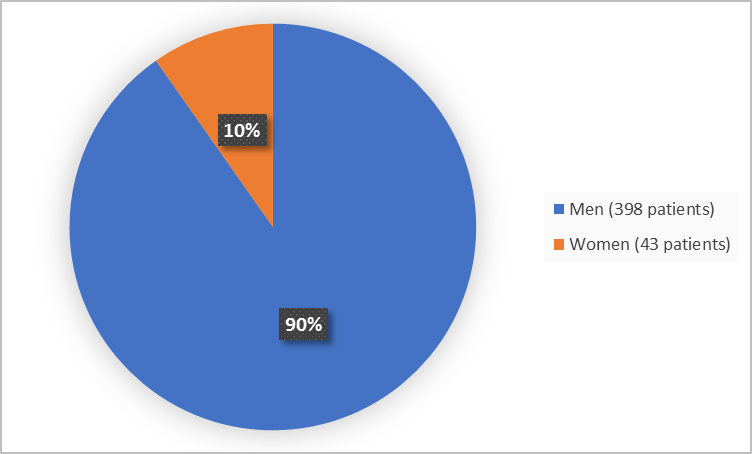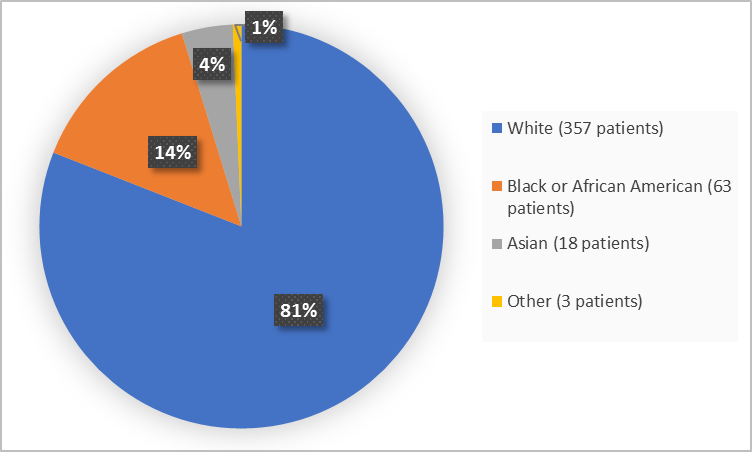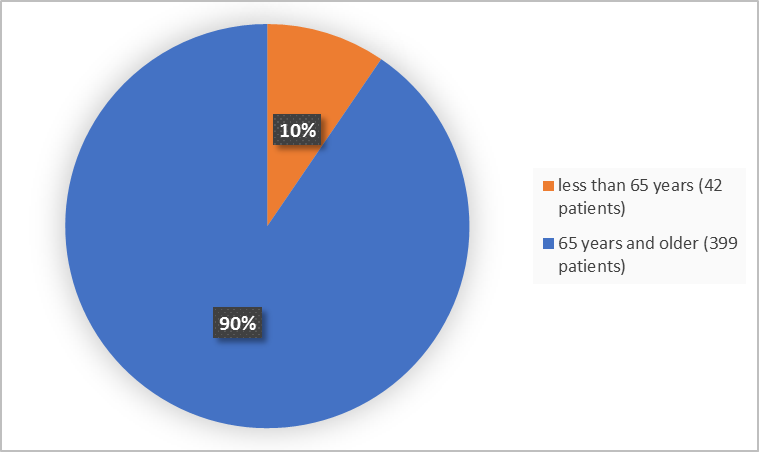Drug Trial Snapshots: VYNDAQEL/VYNDAMAX
HOW TO USE THIS SNAPSHOT
The information provided in Snapshots highlights who participated in the clinical trials that supported the FDA approval of this drug, and whether there were differences among sex, race, and age groups. The “MORE INFO” bar shows more detailed, technical content for each section. The Snapshot is intended as one tool for consumers to use when discussing the risks and benefits of the drugs.
LIMITATIONS OF THIS SNAPSHOT:
Do not rely on Snapshots to make decisions regarding medical care. Always speak to your health provider about the risks and benefits of a drug. Refer to the VYNDAQEL/VYNDAMAX Prescribing Information for complete information.
VYNDAQEL (tafamidis meglumine)/ VYNDAMAX (tafamidis)
(VIN duh kel)/ (VIN-dah-max)
Pfizer, Inc.
Approval date: May 3, 2019
DRUG TRIALS SNAPSHOT SUMMARY:
What is the drug for?
VYNDAQEL and VYNDAMAX are drugs for the treatment of the cardiomyopathy caused by transthyretin‑mediated amyloidosis (ATTR-CM).
In patients with the cardiomyopathy of transthyretin amyloidosis, a fibrous substance called amyloid is deposited in the heart where it interferes with the heart’s function. The condition is progressive and may cause death.
How is this drug used?
Patients should take either VYNDAQEL or VYNDAMAX capsules by mouth once a day.
What are the benefits of this drug?
In a clinical trial, VYNDAMAX reduced the risk of cardiovascular death as well as hospitalization related to cardiomyopathy.
What are the benefits of this drug (results of trials used to assess efficacy)?
The table below summarizes the primary endpoints in the cardiomyopathy trial. The primary endpoint was a hierarchical combination applying the method of Finkelstein‑Schoenfeld (F‑S) to all‑cause mortality and the frequency of cardiovascular‑related hospitalizations.
Table 2. Primary Analysis Using Finkelstein‑Schoenfeld (F‑S) Method of All‑Cause Mortality and Frequency of Cardiovascular‑Related Hospitalizations
|
Primary Analysis |
VYNDAQEL |
Placebo |
|---|---|---|
|
Number (%) of Subjects Alive* at Month 30 |
186 (70.5) |
101 (57.1) |
|
Average Cardiovascular‑related Hospitalizations During 30 months (per patient per year) Among Those Alive at Month 30 |
0.297 |
0.455 |
|
p‑value from F‑S Method |
0.0006 |
|
* Heart transplantation and cardiac mechanical assist device implantation are considered indicators of approaching end stage. As such, these subjects are treated in the analysis as equivalent to death. Therefore, such subjects are not included in the count of “Number of Subjects Alive at Month 30” even if such subjects are alive based on 30 month vital status follow‑up assessment.
Prescribing Information
Were there any differences in how well the drug worked in clinical trials among sex, race and age?
- Sex: The drug worked similarly in men and women.
- Race: The drug worked similarly in White and Black or African American patients.
- Age: The drug worked similarly in patients younger and older than 75 years of age.
Were there any differences in how well the drug worked in clinical trials among sex, race, and age groups?
The figures below summarize the primary endpoint results by subgroup. Results were generally similar in sex, race, and age subgroups.
Figures 4 and 5. Subgroup Analysis of Primary Endpoints - ATTR-CM Trial
* Heart transplantation and cardiac mechanical assist device implantation are treated as death in the analysis.
CV=cardiovascular
FDA Review
What are the possible side effects?
No side effects have been identified during treatment with VYNDAQEL/ VYNDAMAX in clinical trials.
What are the possible side effects (results of trials used to assess safety)?
| In patients with ATTR‑CM, the frequency of adverse events in patients treated with VYDAQEL 20 mg or 80 mg (administered as four 20 mg capsules) was similar to that with placebo. Prescribing Information |
Were there any differences in side effects among sex, race and age?
Differences in side effects among sex, race and age subgroups were not evaluated because no known side effects occurred during treatment with VYNDAQEL/ VYNDAMAX.
Were there any differences in side effects of the clinical trials among sex, race, and age groups?
Because the frequency of adverse events in patients treated with VYDAQEL was similar to placebo in the ATTR‑CM clinical trial, subgroup analyses for side effects were not conducted.
Who participated in the clinical trials?
The FDA approved /VYNDAMAX based primarily on evidence from a clinical trial (NCT01994889) of 441 adult patients . The trial was conducted at 60 sites in Belgium, Brazil, Canada, Czech Republic, Spain, France, Greece, Italy, Japan, Netherlands, Sweden, Great Britain, and the United States. Demographics of this trial are presented in the pie charts bellow.
The figure below summarizes how many men and women were in the clinical trial.
Figure 1. Trial Demographics by Sex
FDA Review
The figure and table below summarize by race how many patients were in the clinical trial.
Figure 2. Trial Demographics by Race
FDA Review
Table 1. Trial Demographics by Race
Race |
Number of Patients |
Percentage of Patients |
|
White |
357 |
81 |
|
Black or African American |
63 |
14 |
|
Asian |
18 |
4 |
|
Other* |
3 |
1 |
*Other: all other races combined
FDA Review
The figure below summarizes by age how many patients were in the clinical trial.
Figure 3. Trial Demographics by Age
FDA Review
Who participated in the trials?
The table below summarizes demographics for patients in the cardiomyopathy trial.
Table 3. Demographics in ATTR‑CM Clinical Trial
|
Demographic Parameters |
VYNDAQEL |
Placebo |
Total |
|
Sex (n,%) |
|||
|
Men |
241 (91.3) |
157 (88.7) |
398 (90.2) |
|
Women |
23 (8.7) |
20 (11.3) |
43 (9.8) |
|
Race (n,%) |
|||
|
Asian |
13 (4.9) |
5 (2.8) |
18 (4.1) |
|
Black or African American |
37 (14.0) |
26 (14.7) |
63 (14.3) |
|
Other |
3 (1.1) |
0 (0.0) |
3 (0.7) |
|
White |
211 (79.9) |
146 (82.5) |
357 (80.9) |
|
Age (years) |
|||
|
Mean |
74.5 |
74.1 |
74.3 |
|
Minimum, Maximum |
46, 88 |
51, 89 |
46, 89 |
|
Median |
75 |
74 |
75 |
|
Age Group (n,%) |
|||
|
< 65 years |
27 (10.2) |
15 (8.5) |
42 (9.5) |
|
≥65 years |
237 (89.8) |
162 (91.5) |
399 (90.5) |
|
Ethnicity (n,%) |
|||
|
Hispanic or Latino |
7 (2.7) |
7 (4.0) |
14 (3.2) |
|
Not Hispanic or Latino |
255 (96.6) |
170 (96.0) |
425 (96.4) |
|
Missing |
2 (0.8) |
0 (0.0) |
2 (0.4) |
|
Region (n,%) |
|||
|
Asia |
12 (4.5) |
5 (2.8) |
17 (3.6) |
|
Canada |
1 (0.4) |
0 (0.0) |
1 (0.2) |
|
Europe |
79 (29.9) |
63 (35.6) |
142 (32.2) |
|
South America |
1 (0.4) |
1 (0.6) |
2 (0.4) |
|
United States |
171 (64.8) |
108 (61.0) |
279 (63.3) |
FDA Review
How were the trials designed?
There was one trial that evaluated the benefits and side effects of VYNDAQEL for the treatment of ATTR-CM. In the trial, patients with ATTR‑CM were randomly assigned to receive either VYNDAQEL (either 20 or 80 mg) or placebo for 30 months. About 90% of patients in the trial were taking other drugs for heart failure (consistent with the standard of care).
The trial compared patients taking VYNDAQEL to patients taking placebo by counting the patients who died or were hospitalized for heart conditions.
How were the trials designed?
VYNDAQEL for ATTR-CM was evaluated in a multicenter, international, double‑blind, placebo‑controlled, randomized, three‑arm trial in 441 patients with wild type or hereditary ATTR‑CM.
Patients were randomized to either VYDAQEL 20 mg (n=88) or 80 mg [administered as four 20 mg capsules] (n=176) or matching placebo (n=177) once daily, in addition to standard of care (e.g., diuretics) for 30 months.
The primary analysis used a hierarchical combination applying the method of Finkelstein‑Schoenfeld (F‑S) to all‑cause mortality and the frequency of cardiovascular‑related hospitalizations, which is defined as the number of times a subject is hospitalized (i.e., admitted to a hospital) for cardiovascular‑related morbidity.
GLOSSARY
CLINICAL TRIAL: Voluntary research studies conducted in people and designed to answer specific questions about the safety or effectiveness of drugs, vaccines, other therapies, or new ways of using existing treatments.
COMPARATOR: A previously available treatment or placebo used in clinical trials that is compared to the actual drug being tested.
EFFICACY: How well the drug achieves the desired response when it is taken as described in a controlled clinical setting, such as during a clinical trial.
PLACEBO: An inactive substance or “sugar pill” that looks the same as, and is given the same way as, an active drug or treatment being tested. The effects of the active drug or treatment are compared to the effects of the placebo.
SUBGROUP: A subset of the population studied in a clinical trial. Demographic subsets include sex, race, and age groups.
PRESCRIBING INFORMATION

